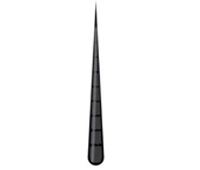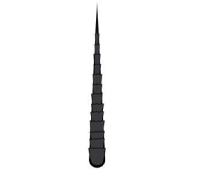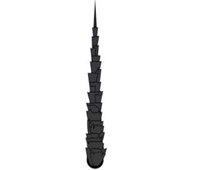Unlocking the Secrets of Lash Porosity
As a lash artist, you’ve likely encountered a variety of lash types, and sometimes, it can be a bit puzzling why some lashes seem to cooperate effortlessly while others present a challenge. Understanding porosity can be a game-changer for lash artists, as it allows you to select the right products and techniques to achieve those perfect lashes for every client. In this blog post, we’ll delve into the fascinating world of lash porosity and explore the solutions that can make your extensions truly shine.
What Is Porosity?
Lash porosity is a term used to describe the ability of the lash hair to absorb and retain moisture, or in this case, lash adhesive. It is determined by the texture of the outer layer of the lash shaft, also known as the cuticle. There are three main types of lash porosity: low, medium, and high. Each type comes with its unique characteristics and challenges.
Low Porosity
Low-porosity lashes have smooth surfaces that can sometimes leave you scratching your head as to why the lash extensions don’t seem to stick. These lashes are often glossy and may appear slightly oily even after cleaning. If you find yourself with this type of lash, the solution is Ceecees pre-treatment. This product will help prepare and level the pH and acidity of the lashes for the extension application, and the Lash Bond applied prior to, during, and post-treatment, ensuring better adhesion and longer-lasting results.

Medium Porosity
Medium porosity lashes are the most encountered type in the lash world. When examined under a microscope, they have a slight texture to their cuticle. While they aren’t as challenging as low-porosity lashes, it’s still crucial to prep them properly for extension application. Once again, Ceecees’ pre-treatment can be your trusted ally in achieving fantastic results with medium porosity lashes.

High Porosity
High porosity lashes are the unicorn of the lash world. These lashes eagerly grab onto the adhesive, often leaving you with minimal time to manipulate or wrap the extension. Naturally occurring high porosity lashes are a lash artist’s dream, as they tend to have majestic retention. You can identify high porosity lashes by their duller appearance and sometimes lighter colour. However, it’s essential to note that damaged lashes can also exhibit high porosity due to the roughened cuticle. For damaged lashes, especially those from chemical treatments, consider using a lash serum to help restore their health and make them more manageable.

Final Thoughts
Understanding porosity is like having a secret weapon in the world of lash artistry. It empowers you to choose the right products and techniques tailored to your client’s unique lash type. Whether you’re dealing with low, medium, or high porosity lashes; there’s a solution available to help you achieve those stunning, long-lasting extensions. So, embrace the power of knowledge and perfect your lash artistry with confidence. Your clients will thank you for it!
